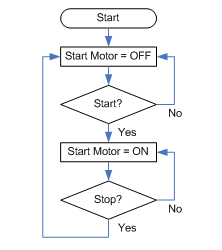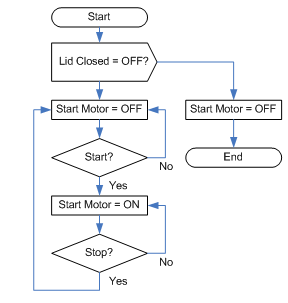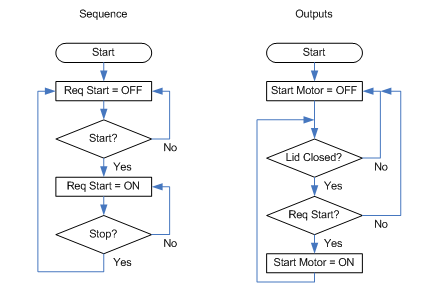I think I can group decisions into two types:
- Decisions where it’s really important that we make the right decision
- Decisions where it’s really important that we make any decision and everyone gets behind it
For instance, deciding what products to launch for the Christmas season is really important. The choices made will have a profound impact on the bottom line of your company. On the other hand, it didn’t really matter what side of the road we decided to drive on, but it was really important that we, as a group, made a decision, and everyone agreed to it.
Now let’s talk about how organizations make decisions. I think there are typically two approaches:
- Appeal to authority
- Appeal to committee
When appealing to authority, the accounting department has the authority to make cash-flow decisions, and the engineering department has the authority to make technical decisions, and the marketing department gets to decide whether we run Superbowl ads or Craigslist ads. The CEO can override these decisions when a higher level view recognizes a different need.
When we appeal to committee, we gather all the “stakeholders” who then sit around a table, generally as equal representatives of their respective departments, and come to some kind of consensus.
I don’t think anyone’s surprised by the fact that when it comes to making decisions where being right is the most important criteria, authoritative decisions tend to be better than committee decisions. In the same way, when success of the decision is tied to consensus rather than the “correctness” of the decision, then committee decisions probably have an edge.
Now, if you’ve spent any time around government offices, you’ll realize that almost all decisions, including planning the staff Christmas gathering, are done by committee. Very large publicly traded companies don’t seem to be much different. On the other side of the spectrum, small companies don’t need much consensus because they’re small, and they tend towards decisions based on authority. Successful entrepreneurs seem to surround themselves with knowledgeable people and trust those people to make intelligent choices. This makes them well suited to make decisions where it’s important to be right, like how much raw material to buy this month, and where to commit other scarce resources.
It’s interesting to look at the outliers too. Apple is famous for being the exception that proves the rule. Despite being a huge organization, all information seems to indicate that Jobs ruled it with authority, not committee. And since he seemed to make good decisions, they were successful. Apple shareholders beware.
Now let’s go all 7-Habits on this and put it in quadrants, dividing decisions along two axes:
| Great Risk if Wrong |
Little Risk if Wrong |
|
| Must have everyone’s support |
1: Invade Iraq? What product for Christmas? |
2: Drive on the Left or Right? |
| Don’t need everyone’s support |
3: Bail out the banks? Windows or Linux servers? |
4: Chicken or Fish? Bike-shed color? |
I divided it into four quadrants numbered 1, 2, 3, and 4. Quadrants 2 and 3 we’ve already covered. In quadrant 2, committees really shine, and in quadrant 3 authority really shines. I’m not even going to talk about quadrant 4.
Quadrant 1 is the tricky one. The Easter Island society collapsed because they were faced with a decision: do we allow everyone to cut down all the trees, or do we centrally manage it? Obviously they made the wrong decision, but the right decision would have required broad support, which is why it’s so difficult.
Apple beat the quadrant 1 decisions by rolling both authority and consensus into one charismatic (and knowledgeable) leader. People follow leaders who have a track record of delivering on their promises. Success is a positive spiral.
The idea that you can take committees and make them authoritative is misguided. On the other hand, we’ve seen our share of authority figures who’ve succeeded at the long road of building consensus around the right decisions. They are our political and cultural heroes.
All of this brings me to two conclusions:
First, unsurprisingly, is that we shouldn’t put big government bureaucracy in charge of quadrant 1 type decisions (and that’s a bit scary, because they certainly are in charge of those decisions now).
Second is that our system of government tends to promote leaders who are good consensus builders without promoting leaders who are likely to make the right decisions. I’m not saying it promotes leaders who are likely to make bad decisions; I’m just saying it’s neutral on the issue.
I’m not out to change the system of government, but I think a two-pronged offensive could make a dent: on one side our domain experts tend to live in a world where consensus building doesn’t matter because their community has the skill to recognize logical consistent arguments. Scientists simply publish their findings and wait for others to confirm or disprove them. Engineers test various design alternatives and measure their performance. Unfortunately this means our domain experts lack the soft skills necessary to convince us to do the right things. A marketing budget for these experts, perhaps paid for by some rational-minded philanthropists, could go a long way.
On the other side, the general public is hopelessly lacking in critical thinking skills. We live in a world where logic is first introduced as a university-level introductory philosophy class. It belongs in high school (along with some other suspiciously missing life-skills like food/nutrition and childcare).
Unfortunately the high school curriculum is decided on by… a committee.






